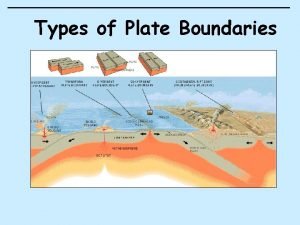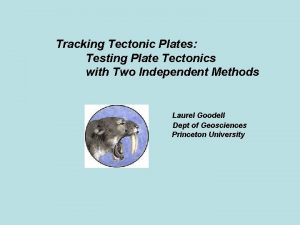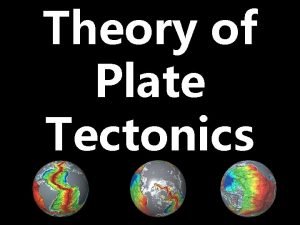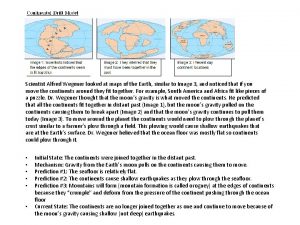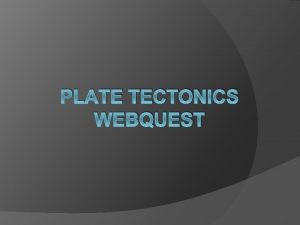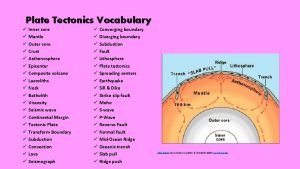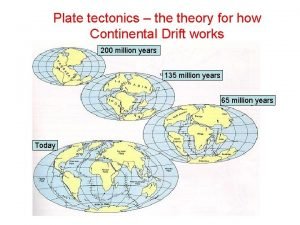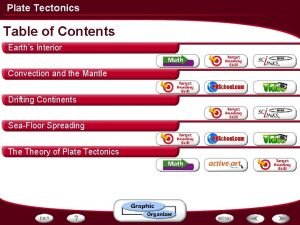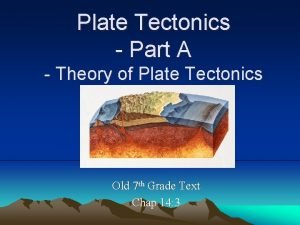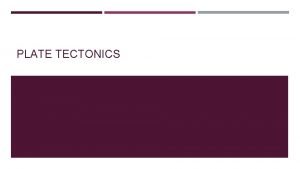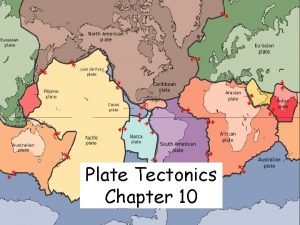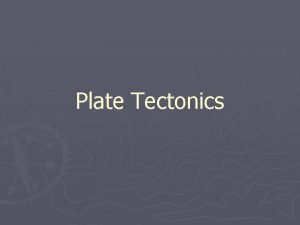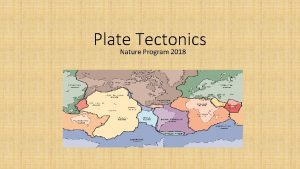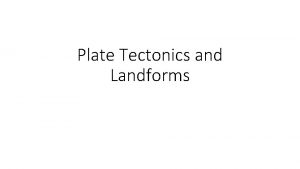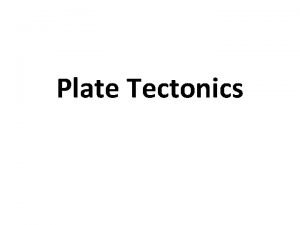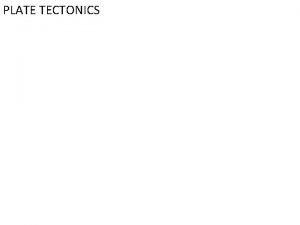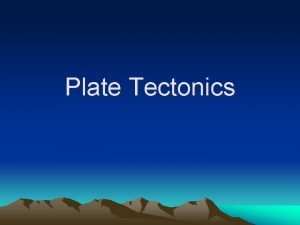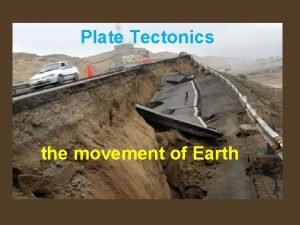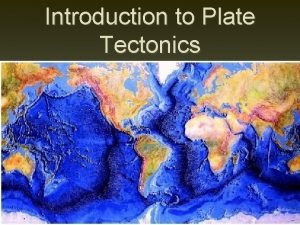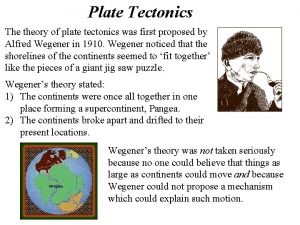Geography Grade 10CAPS Plate Tectonics Presentation layout Plate















- Slides: 15

Geography Grade 10(CAPS) Plate Tectonics

Presentation layout • Plate tectonics • Types of Plate boundaries • Land forms associated with different plate boundaries

• Tectonic plate- a section of the Earth’s crust which can move on the mantle. • Divergent boundaries- plates move away from each other. New crust is created from erupting volcanoes at divergent plate boundaries. • Convergent boundaries- plates come together. One plate is forced under another into the mantle. The plate melts causing earthquakes and volcanic eruptions.

• Transform/transverse/passive boundariesplates grind past each other and movement is associated with earthquakes. • Plate boundary- the edge of a tectonic plate. Plate tectonics is a theory that suggests the crust of the Earth is divided into 7 giant pieces and 12 small ones called tectonic plates.

Plate boundaries

Folding and Faulting • Rocks change shape when they are compressed from the sides. A fold is a bend in a rock that is caused by compressional forces. A fault is a break within the crust. Faulting can be caused by forces of compression or tension.

Types of Folds

Faulting A fault is a crack which forms in rocks as a result of continuous tension and compression. Faulting is caused by forces of compression or tension. Fault line is a line along the surface of the Earth where a fault occurs.

Cont. . . TYPES OF FAULTS NORMAL FAULT- This is caused by forces of tension. REVERSE FAULT- Is caused by forces of compression. TRANSFORM/TEAR FAULT- Tearing forces cause rocks to move past each other laterally.

Earthquakes and Volcanoes • An earthquake refers to an intense trembling of the earth’s crust caused by vibrations. • Volcanism refers to the movement of molten material from one part of the crust to another.

Earthquakes

Volcanoes

Causes of earthquakes and Volcanoes • Nuclear explosions • Impact of meteors • Faulting, folding • Landslide • Mine blasts • Volcanoes occur when magma comes out on to Earth’s surface a lava. This is known as extrusive volcanism. • Most volcanoes occur on the tectonic plate boundaries, at the subduction zone where one plate is sliding beneath another plate.

Impact of Earthquakes and Volcanoes • Earthquakes can cause building and bridges to collapse. Tsunami can carry boats, cars, people and houses with them. Large areas may be submerged by water. • Minerals are found in volcanic rock. e. g. Copper and diamond. Volcanic ash fertilizes the soil. Volcanoes attract tourists. • Natural hot springs are • Ash buries buildings and covers fields.

THANK YOU
 Plate tectonics vs continental drift
Plate tectonics vs continental drift What are four types of plate boundaries?
What are four types of plate boundaries? Plate motion calculator
Plate motion calculator The plate tectonics theory states that
The plate tectonics theory states that Plate tectonic theory vs continental drift
Plate tectonic theory vs continental drift Compare continental drift and plate tectonics
Compare continental drift and plate tectonics Continental drift webquest
Continental drift webquest Inner core vocabulary
Inner core vocabulary Continetial drift
Continetial drift Mantle convection and plate tectonics
Mantle convection and plate tectonics Plate tectonics definition
Plate tectonics definition Driving force of plate tectonics
Driving force of plate tectonics What is this process called
What is this process called Summarize the theory of plate tectonics
Summarize the theory of plate tectonics Harry hess and seafloor spreading
Harry hess and seafloor spreading Continental drift vs plate tectonics
Continental drift vs plate tectonics

